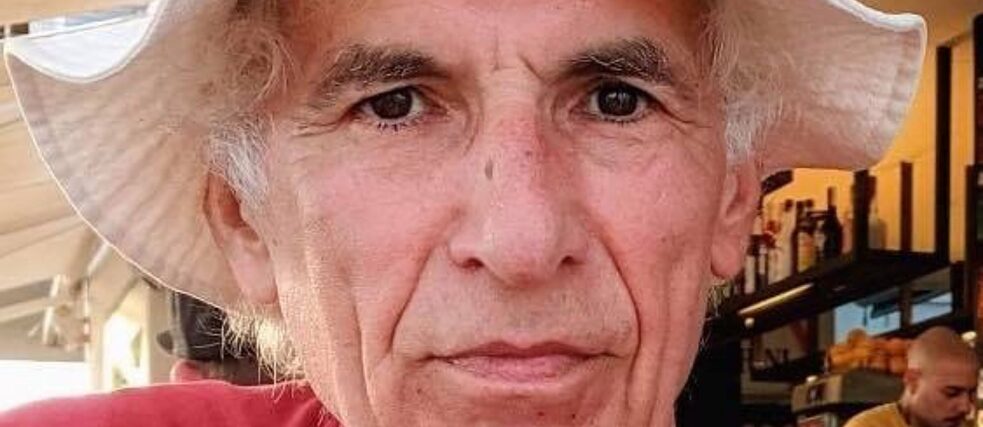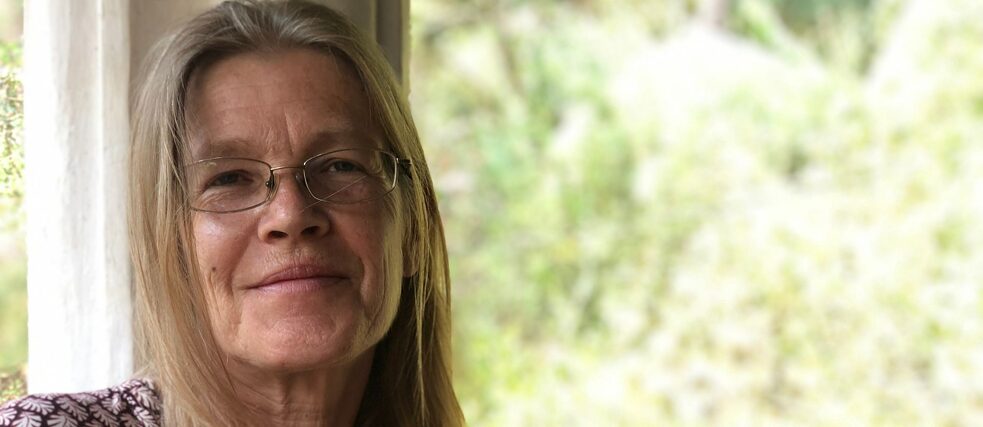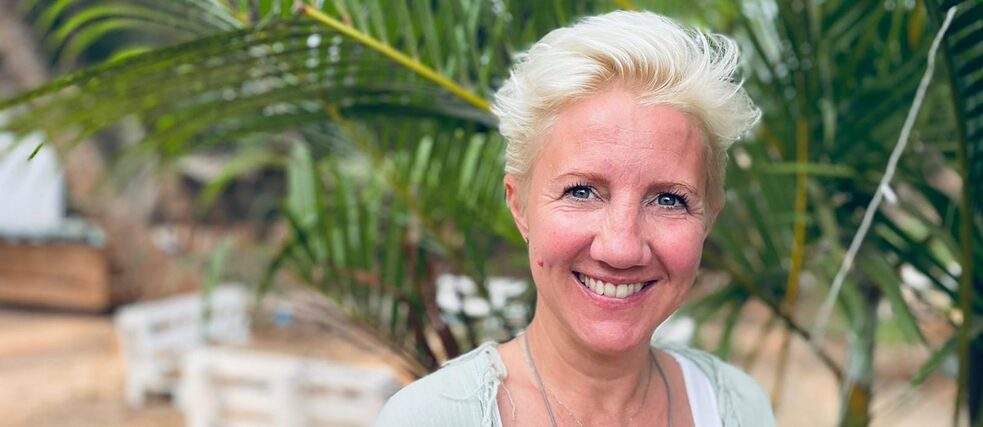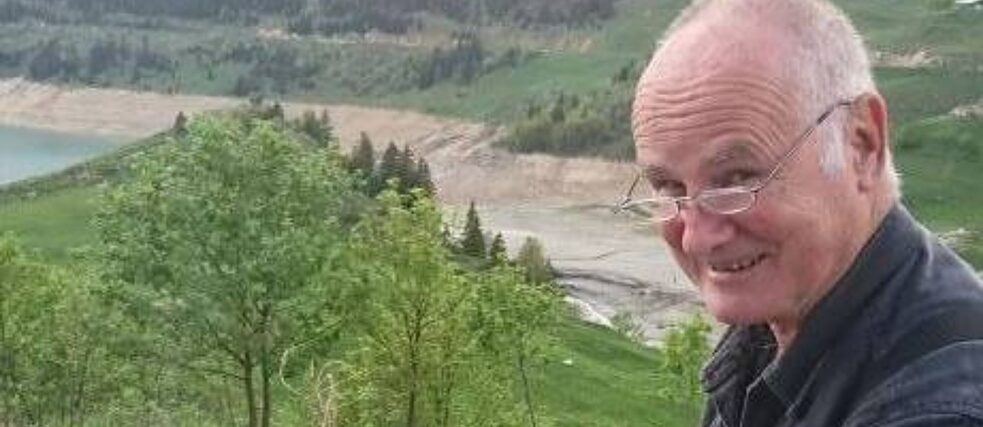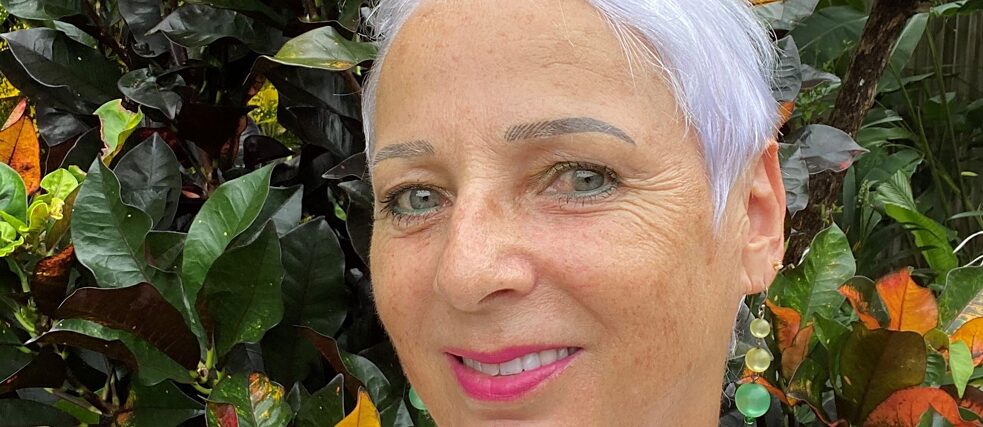Hippietrail
In Search of...

Jonathan Benyon’s Mercedes 0321 bus with British registration, the Silver Express – sometimes also called the Silver Slug – on the Pokhara-Kathmandu road in Nepal.
|
© Jonathan Benyon 1975 (from flickr)
They indulged in individuality, yearned to be free and leave the comfort zone of the West. Many young people with long hair and long dresses travelled overland from Europe to Goa in the 1960s and 1970s. Many carried Hesse’s Siddhartha with them. Some “ex-hippies” and India fans told us about what they were looking for then and what they still find in India today.
By Erdmuthe Hacken
Thomas Müller: In Search of a Sitar
I began enthusiastically reading Hermann Hesse in 1967: Journey to the East, Siddhartha, Steppenwolf, Self-Will, Visitor from India, Demian. But then in 2000 I began reading more of his diaries, letters and short newspaper articles.That’s probably where my interest in India came from. In July 1971, I set off in a fairly old VW bus, which I had traded in for my Fiat 500 shortly before. But not on the typical hippie trail. That’s why I’ve never been to Goa. I wanted to get to know the “real India” and not just the hippie scene. My first trip from the Sauerland (Olpe) to Sri Lanka took about nine months and cost about 4500 DM, including the return flight from Delhi to Amsterdam.
I travelled in an old VW bus from West Germany to Kabul in three months. I sold the bus there and made a six-month journey through Pakistan, India, Nepal and Sri Lanka by bus, train and ship.
So many people were looking for a guru in India; I was looking for a sitar. I finally found one and sent it to Germany. Actually, I sent four sitars, tablas and such back to Olpe. I still have many of them today.
Marie Borsch: Experimenting as a Free Spirit
Back then, we wanted to leave the chaos of the western world behind us, to shift our lives down a gear. We ultimately fell in love with the slowness of India. Here, we could experiment with different lifestyles and live out our music. Actually, Hesse’s literature, especially Siddhartha, really made me open my eyes to the world, look at life differently and finally leave my home country. That was in 1995. Unlike me, my boyfriend at the time was a real hippie who had already travelled to India in the seventies and lived here.The absolute freedom to do what you wanted, that was already unique. That suited my free spirit very well. No rules, yet a lot of mutual respect – that’s how we lived. And we were always left in peace. In retrospect, however, ego always came into play. And in the end, you come to the conclusion that even in the jungle you’re going to have to carry the baggage you wanted to get rid of. But I came back to Goa eight years ago and settled down here. Not on the beach, but down-to-earth in an old Portuguese villa. But the hippie era and its flair are definitely over.
Anika Kreimeier - Learning to Unlearn
India is my greatest teacher: It slaps you, then embraces you. India is also my greatest mirror – I’ve recognised and learned so much about myself here. How I stay calm, for example. Here you also learn to unlearn very quickly.I’ve been living in India since 2015. I don’t really remember what brought me here. I always say I was posted here. The question in itself is also way too rational. I’m here now simply to be different. And people who say India isn’t for them, they’re just not ready to see themselves yet. Because here, you definitely see things clearly. No matter how you look at the world, whether with secular or spiritual eyes – India is simply closer to the universe. And that’s exactly what Siddhartha is for me, the understanding that there’s more than just one side. Seeing possibilities and limitations and the attempts at letting go. Always staying in motion – both inside and outside – and enjoying the experiment of life!
Jörn Raeck: India for 89 Pfennigs a Day
“See you Christmas in Kathmandu.” That was the slogan of dropouts, hippies or adherents of alternative lifestyles on their way east to Asia in the sixties. For me, I still couldn’t even imagine going to Afghanistan, Nepal and India. And yet precisely these countries would determine my entire later life.In September 1968, I bought an old Lloyd Alexander TS – 600cc and 25hp – in Germany for 280 DM. I could also sleep in it. That car took me to India. Later I sold it in Nepal to the king’s chauffeur. My motivation to travel to India was very pragmatic: India was the most distant country that could be reached by car without a long and costly overland journey by ship. Only the Bosporus had to be crossed by boat.
I had bought a huge scale map from Kümmerly und Frey, which showed the main roads to India. Later I learned that the ADAC had already prepared wonderful route plans to India for its members. When I reached India via Pakistan, I first felt like I’d better turn around and go back: The food was so spicy I thought I wouldn’t survive it. On top of that, there was no privacy at all: As soon as I brought the car to a halt, groups of people formed around me. But I got used to it, especially since all the people were incredibly friendly. And curious.
At a daily rate of only 89 pfennigs per day, I stayed in India for five months, crossing it from north to south. I was fascinated by how religion and life were interwoven, but I was put off by how “compassion” was virtually non-existent in real life. When I left India in March 1969, I thought I would never return. But I’d underestimated the fascination of this country: I soon longed for Indian music again, even for Bollywood music, for the smells of the cookshops, for the warm, humid nights. Just two years later, I journeyed back overland to India and even became a dealer in traditional musical instruments.
For enlightenment and deceleration – I came to learn – I don’t have to travel to India. I find them just as well in the mountains or in lonely places by the sea. I repeatedly flew to India in recent years, but more for its ancient culture, the delicious food, the bazaars – and to meet wonderful people from past journeys.
Gitta Yelds: Clearing the Cobwebs
When my friend asked me in 1980 if I’d like to visit him in Sri Lanka, I thought, sure. And it was love at first sight. My first trip to India started on a second-hand motorbike (a red 250cc Kawasaki). We took the ferry from Talaimannar (in the northwest of Sri Lanka) to Rameswaram (in the southeast of India). In Rameswaram, for the first time in my life, I slept on a straw mat on the floor and the food was served on banana leaves. Our journey continued to Chennai and from there by train (with the motorbike) to Delhi. In Delhi we met other travellers who had come overland from Europe in their own vehicles and wanted to go on to Goa. We met them again later.India fascinates me to this day. A few months in India always cleared the cobwebs from my mind. So many things spurred me on to think outside the norm, to see a lot of things with fresh eyes and to integrate new ideas into my life in Europe. At first, I was just looking for the adventure of travel. But travelling to India led to a broadening of horizons that I’m still grateful for today, almost 30 years later.
After the first trip, I was in India many more times – for a few months every year until 1995. We almost always had our own vehicle: In 1984 we went overland from Austria to India with a converted Mercedes bus, which we then sold in Nepal and which was then used as a school bus. A few years later we travelled on a BMW (motorbike) through India, Pakistan, Bangladesh and Nepal.
I read Siddhartha, but I don’t think the book influenced me very much in the beginning. I’m more interested in it today. The novel showed me that many people in India let go of everything material and dedicate themselves to a devotional life. I was impressed by sadhus and yogis who wander about without material possessions and rely on other people’s gifts and hospitality. What was special about the hippie era was the easy-goingness, friendships, adventures and fun. We had a lot of intellectual discussions and there were no differences between people. English was our universal language no matter what corner of the world we came from.
